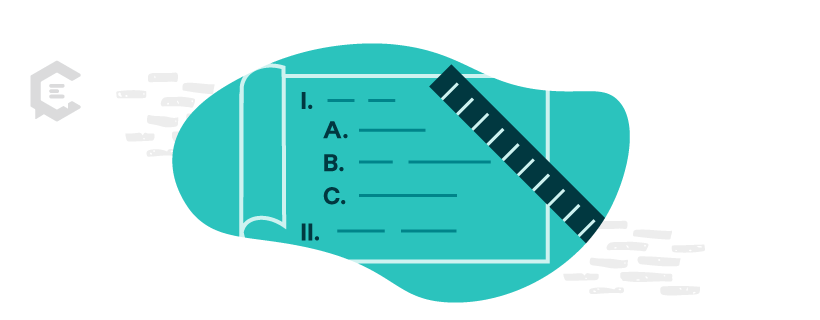As a business owner or marketer (or both), you are constantly writing, from marketing communications and emails to business proposals and customer service responses.
But if you find yourself staring at a blank page for way longer than you care to admit, you’re not alone.
Overcoming writer’s block starts with knowing a few tips and tricks to jump-start your creativity and focus.
5 tips for overcoming writer’s block
Thankfully, there are ways to get your creative juices flowing if you find yourself with writer’s block. Here are five tips for overcoming writer’s block.
1. Draft an outline
If a blank screen is breaking you into cold sweats, creating a quick (or detailed) outline can get some words on the screen and relieve some anxiety. The magic of outlines is that it gives your brain some structure to play with rather than allowing it to go into overload with innumerable possibilities.
Examples of what to do:
- Write a rough skeleton of your content’s intro, main points, and conclusion.
- Pick the section you’re stuck on, and write sub-bullets you can discuss.
2. Let your first draft be the “child’s draft”
Anne Lamott, author of “Bird by Bird,” a popular book on writing, colorfully advises that you can only get to brilliance in the honing process that comes after getting through your crappy first draft. As Lamott says, “The first draft is the child’s draft, where you let it all pour out and then let it romp all over the place, knowing that no one is going to see it and that you can shape it later.”
Examples of what to do:
- For your first draft, type as fast as needed to keep up with your thoughts. Don’t censor them as you go.
- Forego the pressure to “get it right” from the get-go. Have confidence that your research, knowledge, and experience will pour out onto the page.
3. Focus only on writing
One sure way to bog down any creative flow is to keep switching between tasks. Overcoming writer’s block starts with being able to focus.
As if that weren’t troubling enough, the creative part of the brain you need to write is in opposition with the critical part of the brain you need to edit. If you’re frequently rewriting words, sentences, or paragraphs while creating your draft, you could be making things harder on yourself.
Examples of what to do:
- Turn off or minimize all distractions, so they don’t interrupt your flow.
- Leave other tasks for the editing stage, like fact- and spell-checking, editing sentences, looking for synonyms, and finding links. Simply make notes in brackets for you to come back to later.
4. Space out work
Trying to research, outline, draft, and edit a piece in quick succession doesn’t give your subconscious enough time to let the information sink in. This makes it harder for your words to flow, making it tedious to get sentences out.
Examples of what to do:
- Space each step of the writing process (by even as little as an hour) to give the information time to percolate.
- Have the point you’re stuck on in the back of your mind as you space out your work. When you least expect it, the right phrase or word might suddenly come to you. You’ll get a jolt of inspiration that gets you excited to work on your project again.
5. Change up the scenery
When nothing seems to work, a change of scenery can be just the break your mind needs to get out from under the weight of writer’s block. While sometimes you can continue working in another space, consider pausing in favor of other tasks. You might find you feel more refreshed when you return.
Hacks for overcoming writer’s block include:
- Get moving by going for a jog or a walk around the block.
- Find another spot to work from, such as a library or cafe.
- Run errands or meet with an expert for an interview.
Say goodbye to writer’s block
There’s no one-size-fits-all approach for ridding yourself of a bad case of writer’s block, but the tips here can help get you back into your creative groove. You’ll be able to get that marketing material in on time while still delivering your best work.
Need help creating high-quality content? Talk to a content specialist today about your needs.






